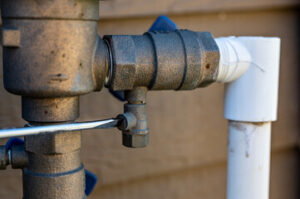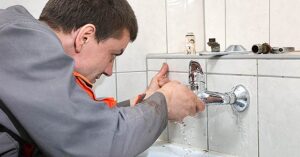Furnace Installation Los Angeles is a complex process only qualified technicians should perform. They will follow the manufacturer’s instructions and local building codes to ensure safety. They will also test your home’s ductwork to determine whether it can handle the new equipment.
Before a furnace installation begins, the area will be “prepared.” This involves shutting off electrical breakers and checking for gas lines.

Several factors determine the cost of furnace installation. Some of the most important are the size, efficiency, and fuel type. Other factors include the brand, warranty, and installation method.
A new furnace is a major investment, so you should carefully consider your options before making a decision. You should also consider the size of your home and whether or not you need ductwork. A professional contractor will help you select the right unit for your home, so be sure to discuss your options with him or her before making a purchase.
In general, a gas furnace costs more to install than an electric furnace. This is because the equipment is bigger and requires more ductwork to run properly. The cost of a furnace also depends on its energy efficiency, which is measured by its AFUE (annual fuel utilization efficiency) rating. The higher the AFUE rating, the lower your energy bills will be.
The most common type of furnace is the gas-fired model. This is the most cost-effective option, especially if your house already has a gas line. The cost of a gas furnace can vary from $3,800 to $10,000. You can save money on your energy bills by choosing a high-efficiency model.
Another factor that affects the cost of a furnace is its location. A new furnace should be located in a well-ventilated area. You should also make sure there are no flammable materials nearby. Additionally, the new furnace should be positioned at least five feet away from any gas appliances such as the water heater or oven.
During the installation process, you should have a gas line installed from the meter to the furnace. The gas line should be sized appropriately for the furnace, and it should be sealed by a professional to prevent leaks. You may also want to consider getting a carbon monoxide detector to monitor the venting system. You should also check with your local fuel provider to see if you need to pay for a gas line inspection or other fees. Lastly, you should install a venting system that can circulate carbon monoxide safely outside your house.
Whether or not your furnace is energy efficient depends on its size and the type of fuel used to heat it. If you have an older furnace, swapping it for a newer one can lower your energy bills. You will also notice less carbon dioxide emissions, which is better for the environment. However, the actual savings will depend on how well you maintain and use your new furnace.
A furnace installation professional can help you decide which model is right for your home. Recognizable brands like Lennox and American Standard offer a variety of models, from budget to high-tech. These appliances are designed to provide heating for your whole house, so you can expect higher prices initially than non-recognized brands.
The energy efficiency of a furnace can be improved by choosing a blower motor that has multiple stages. Single-stage motors run at a constant speed, while two-stage ones can operate at a lower rate for greater efficiency. Variable-speed motors are the most efficient, and they allow the blower to operate at a minimum level.
Depending on where you live, you may need a permit to install a furnace. This may cost anywhere from $50 to $100, but it is worth the investment as it ensures that your new furnace meets local building standards. You will also need to hire a professional to remove and dispose of the old furnace.
Furnace installations can be time-consuming if they are complicated or in an awkward location. In addition to affecting the cost, these complications can lead to delays in your heating service. Fortunately, you can improve the timeline of your Furnace Installation by making sure that it is placed in an easily accessible place.
Ideally, the furnace should be located in the basement or crawlspace. This is because hot air rises, so the furnace will be able to heat your entire home more effectively. Additionally, you should make sure that the furnace has a sufficient supply of gas. You should check with your fuel provider to find out what the maximum capacity of your gas line is. In case you need to increase the size of your gas line, consider using a flexible pipe. This will give you some flexibility and save you money in the long run.
Furnace manufacturers often offer warranty protection to homeowners, though it is important to note that a few key factors can impact the length of these warranties. For instance, many brands require that new furnaces be registered within a specific timeframe following installation, and those who do register often receive longer warranty coverage periods than those who don’t take this step.
Most HVAC contractors also offer their own installation warranties, which cover issues related to the initial installation of your new equipment. This type of warranty typically lasts a year, and your contractor will likely include this coverage as part of the original cost of your system or make it available for an additional fee.
Some manufacturers offer specific component warranties as well, which provide extended warranty coverage for certain parts of the furnace. A typical example is the heat exchanger, which is covered for a longer period under this type of warranty than other components like air filters or fan belts.
Manufacturer warranties can be transferrable to a new homeowner, although most brands have specific processes that must be followed and typically charge a transfer fee. Failure to follow these procedures can void the warranty, which will leave the new homeowner responsible for paying for any repairs or replacements made to the heating system after the sale.
Most manufacturers also have requirements relating to professional maintenance to uphold the validity of their furnace warranties, and these requirements can differ from one brand to the next. For example, some brands will only offer their base warranty to furnaces that have been professionally maintained on an annual basis.
Another important consideration when it comes to furnace warranties is the fact that these warranties are only valid if you use the brand’s approved components in the system. This is especially important because using off-brand components can invalidate the manufacturer’s warranties and leave you in the lurch if you ever need to make a repair or replacement.
Lastly, it’s important to understand that not all home warranty plans cover furnaces and other heating systems, so it’s important to research the specific terms of each plan before making a decision about whether or not this is the right choice for you. Some home warranty plans may offer furnace warranties in addition to other appliances and systems, while others focus solely on protecting against expensive repair costs.
Many furnace problems that homeowners experience don’t have to do with inevitable wear and tear, but rather, the result of poor installation practices. For instance, if a gas line is sized poorly it can cause your unit to perform less efficiently or even break down. Similarly, an improperly sized air duct can lead to 10-30% higher utility bills for the life of your system and make your equipment work harder than necessary. This is why it’s important to have your new furnace professionally installed to ensure the best results.
During furnace installation, the professional will start by thoroughly cleaning the designated installation space and disconnecting all electrical wiring and gas lines. This will help ensure the safety of everyone involved in the installation process. Then, the new furnace will be connected to the ductwork and sealed properly.
The next step is to install a venting system that will direct carbon monoxide out of the house. This system should have a slight slope to prevent clogging and allow condensation to drain properly. You’ll also need to check with your fuel provider if there are any laws regulating your home’s vent piping.
At this point, the professional will test the system to ensure it meets all manufacturer specifications. They will also confirm that the thermostat settings are accurate. Finally, the installer will test the furnace to make sure it ignites and heats up the room air.
Lastly, the technician will show you how to replace your furnace filter and walk you through any new functionality your home’s heating system may have. This includes setting up schedules to remind you to change your filter on a regular basis.
If you’re looking to get a new furnace, it’s important to choose one that offers an excellent warranty. A warranty will give you peace of mind that your new system will last for years to come. It’s also worth asking about the type of maintenance required to keep your furnace running efficiently. Many companies will offer preventive maintenance plans that include a free filter change. This will help you avoid costly repairs in the future.

